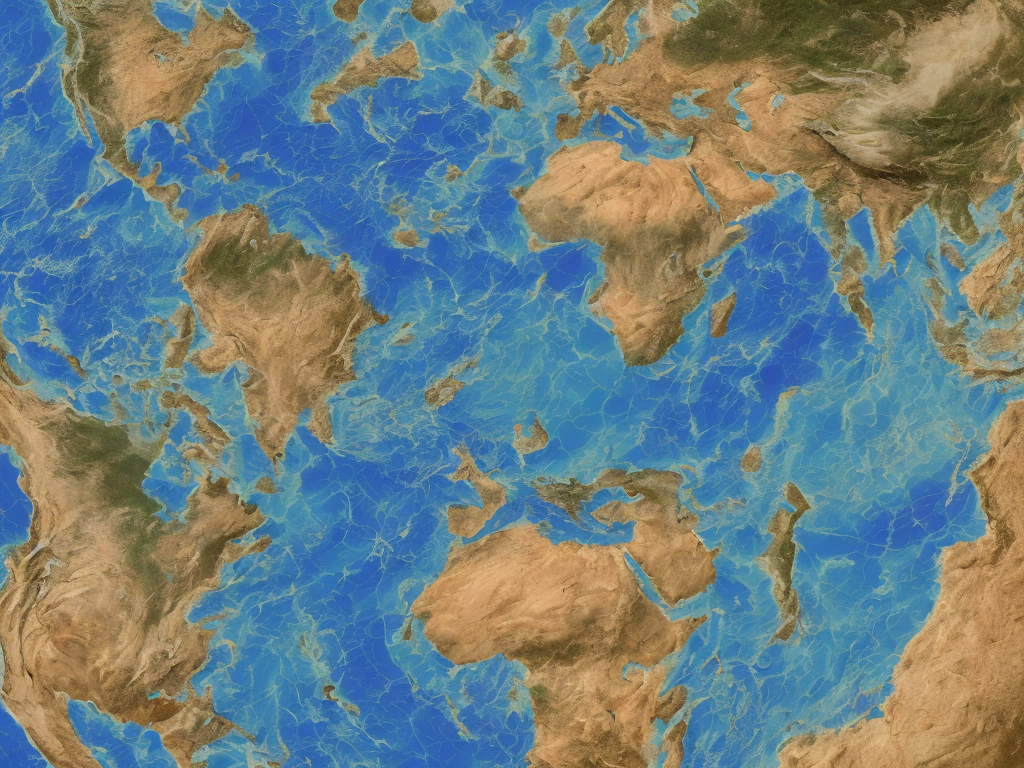
The Earth's crust is divided into two main types: oceanic crust and continental crust. These two types of crust are distinct in their composition, density, and thickness. Understanding the differences between oceanic and continental crust is essential for gaining insight into the geological processes that shape our planet.
Let's start by examining the composition of both types of crust. Oceanic crust is predominantly made up of a dense igneous rock called basalt. Basalt is rich in iron and magnesium, giving it a dark color. On the other hand, continental crust is composed mainly of a variety of rocks, including granite, basalt, and sedimentary rocks like sandstone and shale. The presence of a wide range of minerals in continental crust contributes to its diverse composition and lighter color compared to oceanic crust.
Density is another significant difference between oceanic and continental crust. Because oceanic crust primarily consists of basalt, which is denser than the granite and other rocks found in continental crust, it has a higher average density. The average density of oceanic crust is around 2.9 grams per cubic centimeter (g/cm³), while continental crust has an average density of approximately 2.7 g/cm³. This density variation plays a role in determining how the two types of crust behave during geological processes.
Thickness is yet another important factor that distinguishes oceanic and continental crust. Oceanic crust is relatively thin, ranging from 5 to 10 kilometers in thickness. In contrast, continental crust is significantly thicker, averaging around 30 to 50 kilometers. This difference in thickness is primarily due to the differences in their formation processes.
The formation of oceanic crust occurs mainly at mid-ocean ridges, where tectonic plates are moving apart. At these divergent plate boundaries, molten rock called magma rises through fractures and cools, forming new oceanic crust. As magma cools rapidly underwater, it solidifies into basalt, which makes up the majority of oceanic crust. Over time, as the plates continue to move, the newly formed oceanic crust spreads outward from the mid-ocean ridges, eventually reaching subduction zones.
In subduction zones, oceanic crust is often forced underneath continental crust or another oceanic plate. The intense heat and pressure cause the subducted oceanic crust to melt, contributing to volcanic activity and the creation of mountain ranges. The subduction occurs due to differences in density between the oceanic and continental crust. The denser oceanic crust tends to sink beneath the less dense continental crust during a process known as subduction.
Continental crust, on the other hand, is formed through a variety of processes. One predominant mechanism is the collision of tectonic plates. When two continental plates collide, neither can be fully subducted because of their low density. Instead, the plates buckle and fold, leading to the formation of mountain ranges, such as the Himalayas and the Alps. Another process involved in forming continental crust is the accretion of small fragments of continental crust over time, known as terrane accretion.
Due to the differences in composition, density, and thickness between oceanic and continental crust, they also exhibit various physical characteristics. For instance, oceanic crust is smoother and more uniform compared to the continental crust. This difference is due to the rapid cooling of basaltic lava on the ocean floor, which results in the formation of rocks with small crystals. In contrast, the slow cooling of magma beneath the Earth's surface in continental crust allows for the growth of larger crystals, giving it a coarser texture.
Another difference is in their ages. Oceanic crust tends to be younger than continental crust. The oldest oceanic crust that has been discovered is around 180 million years old, while the continental crust has been found to be over 4 billion years old in some areas. This age disparity is largely due to the continuous creation and destruction of oceanic crust through tectonic processes.
In conclusion, the differences between oceanic and continental crust are wide-ranging. Oceanic crust is denser, composed mainly of basalt, thinner, and younger compared to the less dense, diverse rock composition of continental crust, which is thicker, and older. These contrasting characteristics shape the Earth's surface and influence geological processes, including the formation of mountains, volcanic activity, and the movement of tectonic plates. Understanding the distinct features of oceanic and continental crust is fundamental for unraveling the complex dynamics of our planet.
 Self-Instruct
Self-Instruct